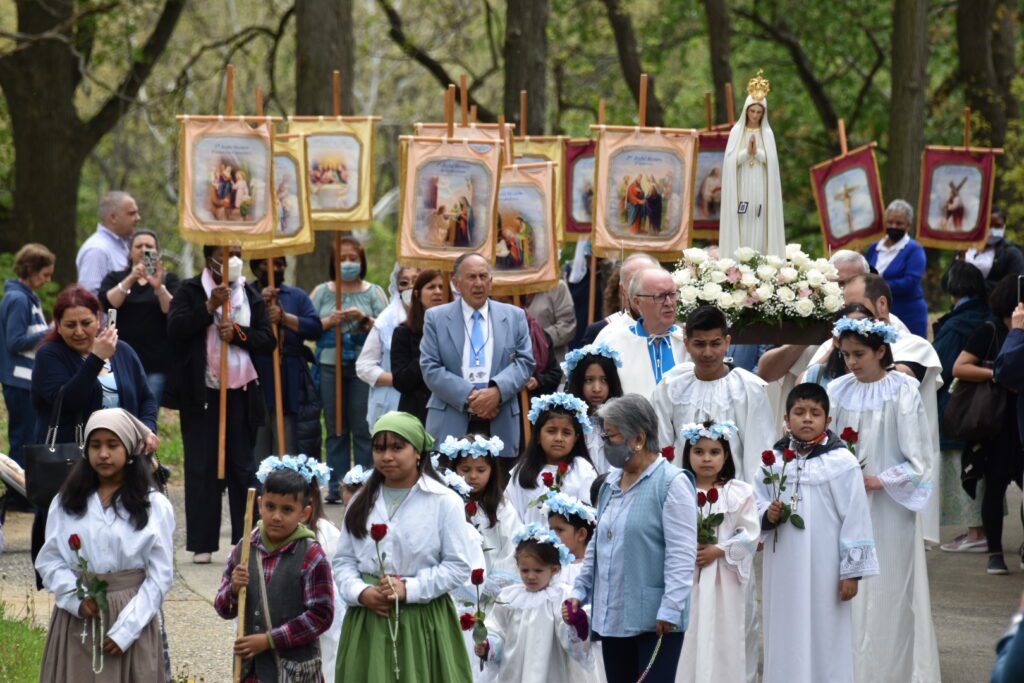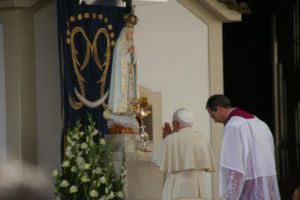by Donal Anthony Foley –


While Advent is principally a time of preparation for the coming of Jesus Christ into the world 2,000 years ago, we also find, in a secondary sense, a focus on the person and role of Our Lady. This becomes clear if we examine some of the Marian feast days, which occur at this special time.
The most important of these, the feast of the Immaculate Conception, on Dec. 8, is rightly regarded as the “light before the dawn” for the entrance of Christ, the Light of the world, amongst humanity.
It was necessary, given His absolute sanctity, that He be born of a sinless and uniquely holy virgin, and Our Lady’s Immaculate Conception, which meant she was free from original sin and thus never for a moment under the power of Satan, was an essential part of our redemption.
Just two days later, on Dec. 10, we celebrated the Translation of the Holy House of Loreto, a feast day that was widely kept in former times. This feast commemorates the Angelic transportation of the house inhabited by Our Lady in Nazareth to Loreto in Italy in the 13th century. It was within the walls of this sacred edifice that the Angel Gabriel appeared to Mary with the request that she become the Mother of God, and thus it was the very place where Christ became incarnate in her womb.
Another traditional feast occurring during Advent is the celebration of the Expectation of the Blessed Virgin Mary, which formerly took place on Dec. 18 in Spain and various other countries. It was originally a feast in celebration of the Annunciation, and was held eight days before Christmas as a way of preparing for the birth of Christ; but over time it developed into a consideration of the wonderful state of expectation of Our Lady during the days leading up to Christmas Day.
Another name for this feast was “Our Lady of the O,” a reference to the great “O Antiphons” which the Church has been singing since at least the eight century as part of the Magnificat canticle of Evening Prayer in the final days of Advent.
This feast originated because of an ancient Church law, which prohibited the celebration of feasts during Lent. And so the feast of the Annunciation was transferred by the local Church from March 25 to the eighth day before Christmas, with the octave of the feast falling on Christmas Day.
Eventually, it was decided to resume the traditional practice of celebrating the feast on March 25, but by that time, people had become so accustomed to it taking place in December, that a new feast was substituted for it – the feast of the Expectation of the Blessed Virgin Mary. The idea was that believers should ponder with devotion the sentiments that Our Lady must have felt in the days leading up to the birth of the Christ Child.
In former times, this feast was celebrated with great solemnity in Spain, with a High Mass sung early in the morning each day during the Octave. It was the practice for pregnant women to assist at this Mass in order to both honor Our Lady as the Mother of God and to implore her blessing.
It is difficult for us to appreciate just how ardent a desire the Blessed Virgin must have had to see the Christ Child, who was both her God and her son. She had carried him in her womb for nine months and now the time she had waited for with great longing had finally arrived.
And yet it was not a time of unmixed tranquility for her. Rather, she and St. Joseph had to make the hurried journey from Nazareth to Bethlehem to comply with Caesar Augustus’s order that “the whole world be enrolled,” and once arrived, faced the anxiety of having no place to stay except a humble cave outside of town, when the long awaited birth of the Savior arrived.
Even though the feast of the Expectation is no longer celebrated as part of the Church’s calendar, we can deepen our own expectation for the coming of Christ by meditating on the themes found in this feast. We can do this by entering into the silence of Bethlehem and imitate Our Lady in her profound meditation on the coming birth of the Savior. It calls us to step back from the hustle and bustle of preparing for Christmas, to consider the real meaning of the season.
In so doing, we should also adopt the sentiments expressed by St. Paul in his letter to the Philippians: “Rejoice in the Lord always; again I will say, Rejoice. Let all men know your forbearance. The Lord is at hand. Have no anxiety about anything, but in everything by prayer and supplication with thanksgiving let your requests be made known to God. And the peace of God, which passes all understanding, will keep your hearts and your minds in Christ Jesus.” (Phil 4:4-7)
Certainly, for Our Lady the birth of Christ was a time of peace but also for rejoicing, and we can share in those sentiments if we truly enter into the spirit of Christmas, especially during this final week.
We can see, then, in these various Marian feasts during December a subtle backdrop to the celebration of Advent. Our prayer should lead us to be more attentive to the great mystery, which is gradually unfolding during this time, and particularly seek Our Lady’s intercession that we, like her, may be able to fully open our hearts and welcome the Christ Child with as much love as possible.
Donal Anthony Foley is a regular contributor to Soul Magazine and WAF USA Fatima blog. He is the author of a number of books on Marian Apparitions, and maintains a related web site at www.theotokos.org.uk. His updated book Medjugorje Complete has recently been published by Angelico Press. He has also written two time-travel/adventure books for young people and the third in the series is due to be published shortly – details can be seen at http://glaston-chronicles.co.uk.











